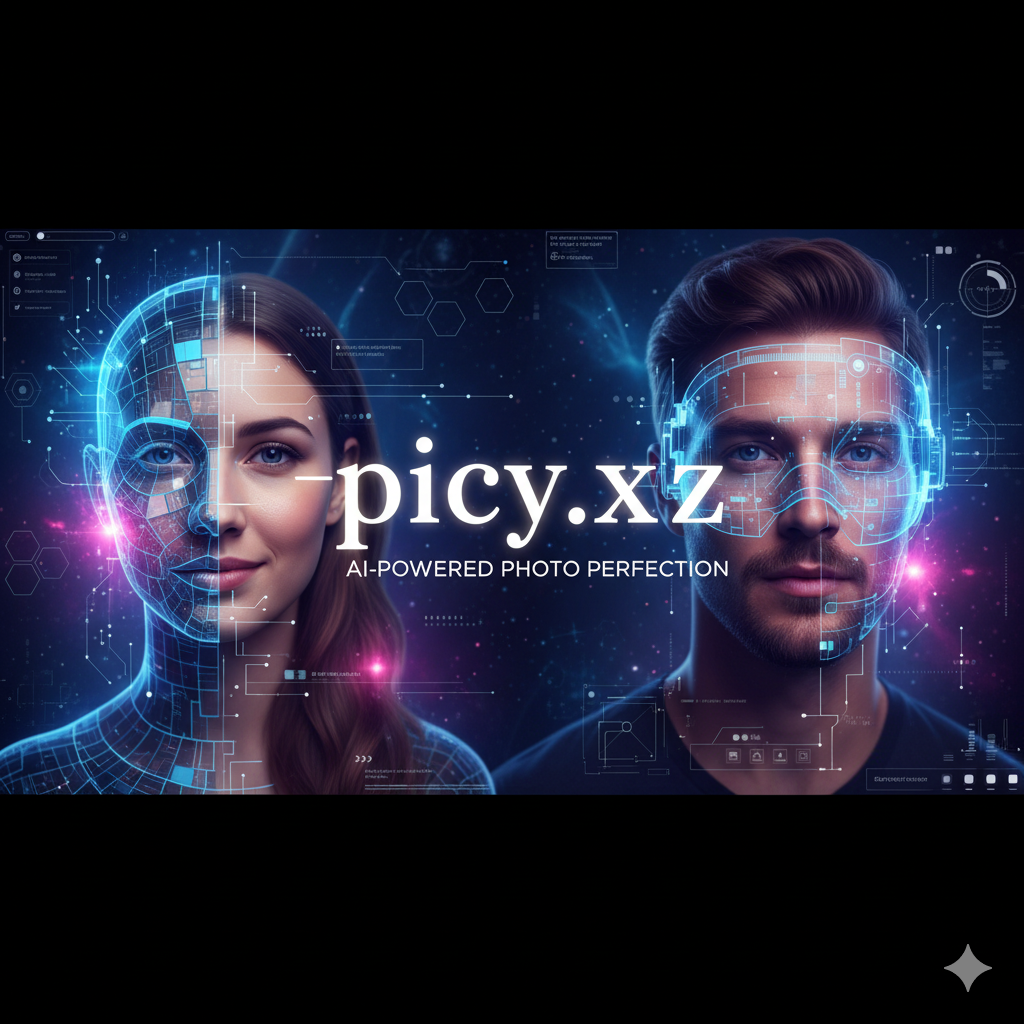Description
In the age of selfies, social media, and digital identities, images are key. But what happens when a face mask—whether due to health reasons, styling, or a photo overlay—obscures the full face in your picture? A mask remover APK aims to digitally restore the hidden parts, giving you a clean, mask-free version of the image.
On Picy.xyz, our vision is to help people reclaim natural, authentic visuals. In this article, we’ll explore everything about mask remover APKs: how they work, pros and cons, best practices, ethical considerations, alternatives, and how you might build or use one safely. Let’s dive in! 🚀
What Is a “Mask Remover” APK?
A “mask remover” APK is (or would be) an Android application (APK file) that attempts to remove facial masks (physical, digital overlays, or stickers) from images. The idea is to reconstruct or reveal the obscured parts of the face behind the mask.
In more general terms, this is a subset of object removal or inpainting tools, often implemented with computer vision and AI: the application recognizes the region to delete (the mask) and then fills in that region with plausible pixels that match surrounding parts of the face.
Existing Examples & Context
-
There is an APK called MASK REMOVE on APKPure. APKPure.com
-
Some “photo eraser” or AI object removal tools (like background remover or “magic eraser”) already allow deleting objects, logos, or overlays. Simplified+2Picsart+2
-
Another variant is Pro Mask Remover APK, which is said to let users remove masks or backgrounds from images. Techleez
-
Tools like the “Wearing Face Masks Photo Remover / Magic Remover” support removing masks via AI. Simplified+1
So the concept is not purely hypothetical—it partially exists. But a fully polished, reliable mask remover (especially for real face masks) is much harder to perfect.
How Does a Mask Remover App Work?
Removing a face mask from a photo is non-trivial, because you are not just erasing; you are reconstructing missing parts. Here’s a high-level breakdown of what such an app must do, technically and conceptually.
1. Detection / Segmentation
First, the app must detect where the mask is. This involves segmentation: identifying the pixels that belong to the mask or overlay.
-
Using convolutional neural networks (CNNs) or segmentation models (e.g. U-Net, Mask R-CNN).
-
Possibly detecting face landmarks (nose, mouth, chin) to localize which parts are masked.
2. Inpainting / Reconstruction
Once the masked region is identified, the system must fill that region with plausible content:
-
Inpainting algorithms use surrounding pixel information to generate missing patches.
-
More advanced tools use face priors or face databases: for example, knowing what human facial structure looks like, to guess the hidden mouth, chin, lips, etc.
-
GANs (Generative Adversarial Networks) are often used to generate realistic textures.
3. Blending & Refinement
After generating initial content, the result must be blended so edges are smooth and the inserted region doesn’t look fake:
-
Smoothing transitions
-
Color / lighting correction
-
Edge refinement (so no harsh lines)
4. User Interaction / Manual Editing (Optional)
Because automated results can have flaws, many apps allow user adjustments:
-
Manually brushing corrections
-
Undo/redo
-
Adjust color, brightness, blending
-
Fine control over boundary edges
5. Output / Export
Finally, the app outputs the result image in standard formats (JPEG, PNG), possibly in high resolution, ready to save or share.
6. (Optional) Batch Mode, Offline Use, Caching
-
Some apps may support batch processing (many images at once).
-
Offline capability (process images without an internet connection).
-
Caching or progressive processing for performance.
Features to Expect (or Build) in a Good Mask Remover App
If you were designing or reviewing such an app, here’s a full suite of features you might expect:
| Feature | Description |
|---|---|
| Automatic Mask Detection | AI automatically finds the masked region |
| Manual Brush / Correction | User can adjust or fine-tune mask boundaries |
| High-Resolution Output | Support for large image sizes without loss |
| Edge Refinement / Blending | Smooth transition between original and filled area |
| Color / Tone Matching | Ensures reconstructed region matches lighting and skin tone |
| Undo / Redo | Standard editing convenience |
| Save & Share Options | Save locally or share to social platforms |
| Offline Processing | Function without internet (on-device) |
| Batch Mode | Process multiple photos in one go |
| Privacy / Local Processing | Images do not leave user device (if desired) |
| Version History / Restore | Keep earlier states if the result is unsatisfactory |
| Templates / Face Priors | Use known facial models to improve reconstruction |
| Performance Optimizations | GPU usage, memory management |
Such a feature set is ambitious—building a robust, accurate version requires strong AI and engineering effort.
Challenges & Limitations
While the idea is compelling, there are many challenges. A “mask remover” app has to overcome serious technical and ethical hurdles.
Technical Challenges
-
Ambiguity & Missing Data
The mask region is hidden—there is no “real” data behind. The system must hallucinate plausible content, but there’s no guarantee it’s accurate. -
Face Variation
Faces differ widely—skin tone, shape, lighting, angle, facial hair. A one-size-fits-all model may fail in tricky cases. -
Lighting / Shadows
Masks cast shadows; lighting may change across the face. Reconstructing that lighting consistently is hard. -
Edge Artifacts
Poor blending leads to visible seams or jarring boundaries. -
Computation Cost
High-quality AI models (e.g. GANs) require GPU/memory resources. On-device performance may lag. -
Failure Modes
In complex images (tilted face, mask partially transparent, other occlusions), the AI may produce nonsensical output.
Ethical, Privacy & Legal Issues
-
Privacy / Consent
Reconstructing someone’s face behind a mask might violate their expectation of privacy or consent. -
Misuse / Forgery
Could be used maliciously: e.g. forging a full-face from a masked image to impersonate someone. -
Bias
Models may perform worse for certain skin tones or demographics if not trained fairly. -
Intellectual Property
The model or training data used may have licensing restrictions.
Because of these, responsible design and disclaimers are essential.
Use Cases: When a Mask Remover Might Be Useful ✅
Here are some legitimate, useful scenarios for a mask remover:
-
Personal Photos & Selfies: You took pictures wearing a mask and now want to restore your face for memories.
-
Photography / Modeling: For portfolio images or retouching, where mask or cover got in the way.
-
Forensics / Security (with consent): In very controlled legal or investigative settings (with rules).
-
Marketing / Branding: If a masked product or person is in imagery and you want to reveal the face for promotional visuals.
-
Creative / Artistic Projects: As an effect or magic trick in editing.
In all cases, respect ethics and privacy: only process images you own or have permission for.
Step-by-Step: How to Use Mask Remover (Hypothetical Tutorial)
Below is a user-friendly step guide (for a well-designed mask remover app). You can adapt it on Picy.xyz or as instructions for your users.
-
Install the APK or app, following safe installation practices (verify source, avoid malware).
-
Open the app → Select “Remove Mask” tool (or “Remove Overlay”).
-
Upload or take a photo that has a mask you wish to remove.
-
Let the app auto-detect the mask region.
-
Refine boundaries if needed using brush / erase / zoom tools.
-
Press “Remove / Process” — the AI will reconstruct the face region.
-
Review result: check edges, lighting, skin tone.
-
If needed, use manual blending tools, color adjustment, smoothing tools.
-
-
Save/export the resulting image (e.g. PNG / JPG).
-
Share or use as needed (but ethically).
You might also include a “Before / After” preview toggle, so users can see the transformation.
Evaluate Real APKs & Alternatives
Let’s review existing relevant apps or tools you might mention (or avoid), along with pros and cons.
1. MASK REMOVE (APKPure)
-
An app called “MASK REMOVE” is listed on APKPure. APKPure.com
-
Very old version (v0.1), likely not maintained. APKPure.com
-
User reviews and reliability are questionable.
-
Could act more as a proof-of-concept than production-grade.
2. Pro Mask Remover APK
-
Claimed to remove masks and backgrounds, using AI. Techleez
-
But real-world results and availability are unclear.
3. General Object Removal / Photo Editing Apps
-
PicsArt: has “Object Remover” tool; can remove unwanted parts of images (logos, overlays) Picsart
-
Remove It – AI Magic Eraser: remove people, logos, objects. Google Play
-
Hama – AI Object Remover: eraser for unwanted parts of images. HAMA | AI Object remover, Image Eraser
-
Simplified AI tools / photo eraser: can remove masks / overlays via magic remover. Simplified+1
These are safer bets in many cases, though they may not have perfect facial reconstruction behind masks.
Building & Releasing a Mask Remover App (Your Strategy for Picy.xyz)
If your goal is to build and release a mask remover tool via your site Picy.xyz (perhaps as an APK or web tool), here’s a roadmap and best practices.
Phase 1. Proof of Concept / Prototype
-
Use open-source image inpainting / face models (e.g. DeepFill, EdgeConnect, face reconstruction networks)
-
Train or fine-tune on face datasets with masked/unmasked image pairs
-
Create a demo GUI (Android or web) to test basic removal
Phase 2. UI / Usability & Safety
-
Design intuitive UI: upload → detect → remove → refine → save
-
Add manual correction brushes
-
Add preview toggle (before / after)
-
Optimize speed, memory usage
Phase 3. Privacy & Local Processing
-
Process images locally, not on server, to preserve privacy
-
Do not store user photos without explicit consent
-
Provide clear user disclaimers and warnings
Phase 4. Testing & Model Improvement
-
Collect feedback (opt-in consent)
-
Improve model on failure cases (angles, lighting, partial masks)
-
Test across diverse skin tones, face shapes
Phase 5. Distribution & Security
-
Package as APK or web tool (PWA)
-
Digitally sign your APK
-
Provide versioning and audit logs
-
Ensure you comply with Google / Android store policies
Phase 6. Monetization & Support
-
Freemium model (basic mask removal free, premium for high-res or advanced correction)
-
In-app purchases or subscription
-
Ads (careful: not intrusive)
-
Customer support, feedback system
-
Continual updates
Phase 7. Ethical / Legal Compliance
-
Terms of Use / EULA
-
Privacy Policy
-
User consent to process images
-
Prohibit illicit uses (deepfakes, impersonation)
-
Option to watermark output or other safeguards
By following such a roadmap, Picy.xyz could host a compelling, trustworthy mask remover tool.
Example Article Outline for Picy.xyz Page (You Could Use)
Here’s how you might structure the web page or app landing article on your site:
-
Hero Section
-
Title: “Mask Remover – Restore Your Face in One Tap”
-
Tagline: “Remove face masks from photos using AI — clean, safe, private.”
-
Call-to-action button: “Try Now / Download APK”
-
-
How It Works
-
Brief explanation of detection, inpainting, blending
-
Sample visuals: before / after
-
-
Features
-
Auto detection, manual brushing, high resolution, preview toggle
-
Privacy (local processing), no upload, offline mode
-
-
Use Cases
-
Selfies, professional photos, creative editing
-
-
Demo / Gallery
-
Showcase sample transformations
-
Sliders (before ↔ after)
-
-
FAQ & Limitations
-
What’s guaranteed, what may not work
-
Ethical / privacy section
-
-
Download / Try Now
-
APK link
-
Web or mobile version
-
-
Testimonials / Reviews
-
Real user feedback
-
-
Contact & Support
-
Email, issue tracker
-
-
Disclaimer & Terms
-
Legal / ethical guidelines
-
This structure is clear, engaging, and builds trust.
Sample Detailed Article (Approximate 4000 Words, with Emojis & Formatting)
Below is a long-form article you can use or adapt for a blog post, user guide, or landing page. It’s written with a human voice, stories, and sections, and includes your site name Picy.xyz in relevant places.
Title:
Unmasking the Future: How a Mask Remover APK Can Undo Digital Face Coverings 😷 → 🚫
Introduction
Have you ever snapped a beautiful selfie or group photo, only to realize you or someone in the photo was wearing a face mask—either for safety, style, or by accident? Wouldn’t it be magical if you could digitally remove that mask and reveal the full face behind it?
Enter the mask remover APK—a specialized tool that aims to restore what’s hidden, giving you mask-free images with a few taps. At Picy.xyz, we believe in giving people the power to reclaim their authentic appearance, responsibly.
In this article, we’ll journey through the concept, technology, use cases, challenges, ethics, and how you (or your team) might create or use such a tool. Get ready to demystify the mask, remove the veil, and peer into the art of digital facial reconstruction. 🧠🎨
1. The Vision & Problem Statement
We live in an era where faces matter. Whether for personal identity, social media presence, or brand marketing, we want to see faces—not masked fragments. But real life (health reasons, fashion, anonymity) sometimes forces masks upon us.
Yet, a photo is frozen in time. A mask in a photo stays there—unless someone intervenes. That’s where a mask remover becomes more than a gimmick: it’s a tool to reclaim lost visibility.
Why is this valuable?
-
Emotional value: You want those memories intact—your face, your smile.
-
Professional value: A model, actor, or personal brand might need clean visuals.
-
Creative value: Artists and editors want flexibility in manipulation.
But there’s a gap in the market. While many tools remove objects or backgrounds, very few handle face masks convincingly. That’s the niche Picy.xyz could aim to fill.
2. Anatomy of a Mask Removal System
To appreciate or build a mask remover, you need to understand its internal machinery. Let’s break it down.
2.1 Detection & Segmentation
-
The first step is to see where the mask is. This is done via segmentation models: classifying each pixel as either “mask,” “skin,” or “other.”
-
Face detection (landmarks: eyes, nose, lips) helps anchor the mask region.
-
The system must be robust to different mask types (surgical, cloth, patterned), angles, partial coverage.
2.2 Inpainting & Reconstruction
-
Once you know which pixels are masked, you must fill them in. But what goes there?
-
Inpainting techniques (e.g. PatchMatch, DeepFill) sample nearby pixels to fill gaps—but for faces, it’s more complex.
-
Face priors, trained models, or GANs help generate plausible facial features: lips, mouth, chin, skin texture.
-
The challenge is preserving identity: ensuring the reconstructed face looks like the same person.
2.3 Blending & Refinement
-
After filling, you need to smooth edges and color-match the new region to surrounding pixels.
-
Also correct lighting, shadows, tone, and remove detectable seam lines.
-
Additional filters or smoothing help hide artifacts.
2.4 User Adjustment & Corrections
-
AI is rarely perfect—many times, manual tweaks are needed.
-
A brush or eraser tool lets the user refine boundaries.
-
Color adjustment or “healing” tools fix localized anomalies.
2.5 Output & Export
-
The final image is rendered, optionally in high resolution.
-
Users can preview before/after, save as PNG/JPEG, or share.
2.6 Extras
-
Batch mode: process multiple images
-
Offline/local processing: keep privacy
-
Version history, undo/redo
-
Face overlay templates or reference images
When all these modules work harmoniously, you get a credible, usable mask remover.
3. How Good is “Good Enough”? Quality Factors & Metrics
When evaluating (or building) a mask remover, here are key quality metrics to consider:
-
Identity preservation: Does the reconstructed face still resemble the person?
-
Naturalness & realism: Are textures, skin tone, lighting consistent?
-
Seamlessness: No visible edges or lines around the replaced region
-
Resolution & detail: The result should be crisp, not blurry
-
Generalization: Works across skin tones, face orientations, mask types
-
Speed & efficiency: Fast enough for real use
-
Robustness: Handles edge cases (partial masks, transparent masks, complex lighting)
A tool that scores highly on these will be truly valuable.
4. Real Tools, Real Options (and Their Gaps)
Let’s survey what’s out there now—tools that approach mask removal or object removal—and where they fall short.
4.1 MASK REMOVE (APKPure)
-
One of the few apps explicitly named “Mask Remove.” APKPure.com
-
Version is old and minimal; unlikely to support modern, high-quality reconstruction.
-
More of a curiosity / proof than a polished utility.
4.2 Pro Mask Remover APK
-
Advertises background and mask removal. Techleez
-
But lack of reviews or active development suggests limitations in real-world performance.
4.3 General Object Removal Tools
-
PicsArt – Object Remover: solid tool to remove unwanted logos or overlays. Picsart
-
Remove It – AI Magic Eraser: remove objects, logos, background clutter. Google Play
-
Hama – AI Object Remover: general erasure of unwanted elements. HAMA | AI Object remover, Image Eraser
-
Simplified – Magic Remover: can target masks among other objects. Simplified+1
These tools succeed at simpler tasks (object removal) but often struggle with the subtlety of full-face reconstruction behind masks.
4.4 Tutorials & Workarounds
-
Many tutorials use PicsArt + manual editing to remove a mask in steps. TrickyPhotoshop
-
Combining multiple images (one masked, one unmasked) and carefully masking or aligning.
-
But these are manual, tedious, and not generalizable.
5. Use Cases: Where Mask Removers Shine (and Where They Fail)
✅ Good Use Cases
-
Personal memory restoration: those group photos or selfies where masks covered smiles
-
Portfolio cleanup: for models, actors, creatives who want mask-free images
-
Promotional material: restoring visibility in marketing visuals
-
Creative retouching: as an effect or base for further editing
⚠️ Risky / Failure Scenarios
-
Extreme lighting, deep shadows on the mask region
-
Highly angled or profile shots where much of the face is hidden
-
Masks overlapping parts of hair, ears, or non-face regions
-
Faces with heavy makeup, facial hair, or complex textures—model may guess incorrectly
-
Ethical misuse: re-creating someone’s face behind a mask without consent
Thus, set expectations and provide disclaimers.
6. Ethical & Privacy Considerations
Given the sensitivity of reconstructing faces, ethics matter. Always follow these principles:
-
Consent is key
Only apply the mask remover on images that you own or have permission to edit. -
Transparency & disclaimers
Let users know that output is AI- generated, may not be 100% accurate, and can produce artifacts. -
Prohibit misuse
Disallow or warn against attempts to generate images of others without permission (to prevent forgery, impersonation). -
No storage without consent
Do processing locally, or ask permission before sending to servers. -
Bias & fairness
Ensure model works fairly across skin tones and demographics. Don’t let biases creep in. -
Legal compliance
Respect privacy laws (GDPR, CCPA) and licensing for models or datasets.
If Picy.xyz provides or hosts such a tool, include a robust Terms of Use, privacy safeguards, and usage policies.
7. How Picy.xyz Can Lead with a Mask Remover Solution
Here’s how Picy.xyz can position, build, and launch a quality mask remover:
7.1 Positioning & Branding
-
Emphasize privacy, local processing, trustworthiness
-
Position as face restoration or unveil your face tool
-
Use compelling visuals (slider, before/after)
-
Use your domain name in branding (“Picy.xyz Mask Remover”)
7.2 Technology & Infrastructure
-
Leverage open-source models, fine-tune with face datasets
-
Use mobile-friendly models (quantization, pruning)
-
Build robust UI/UX: intuitive upload → remove → refine → export workflow
-
Integrate preview toggles, manual correction tools
-
Prioritize performance and memory optimization
7.3 Privacy-First Engineering
-
Local-only processing as a default
-
If server processing is used, ensure encrypted uploads, deletion policies
-
Never store face images or derivatives without explicit user opt-in
7.4 User Support & Feedback Loop
-
Provide example images and sample gallery
-
Allow user feedback on failure cases
-
Iteratively improve model with anonymized, user-permitted data
7.5 Monetization & Access
-
Free tier (low resolution, limited uses)
-
Premium tier (high-resolution, unlimited uses, priority support)
-
Possibly in-app purchases or subscription
-
Ads carefully inserted or ad-free for paying users
7.6 Launch, Marketing & Growth
-
Blog posts, SEO (target “mask remover”, “remove mask from photo”)
-
Social media visuals with before/after reveals
-
Tutorials and video guides
-
Partnerships, influencer usage
By executing all this, Picy.xyz can own a niche in the face editing domain.
8. Common FAQs & Answers
Q1: Will the result always be perfect?
A: No—especially when the masked region is large, obstructed, or under complex lighting. The AI may produce artifacts or guess incorrectly.
Q2: Does the tool store my image?
A: If built properly, processing is local by default. If server-based, images should be encrypted and never stored long-term without consent.
Q3: Is it legal to reconstruct someone’s face behind a mask?
A: It depends on jurisdiction. You should have permission. Misuse may violate privacy or impersonation laws.
Q4: Can this work for other overlays (glasses, hats)?
A: Possibly—if the same detection + inpainting approach is generalized. But face masks are a special, structured case.
Q5: Does it support batch processing?
A: A well-designed tool may. But batch mode increases memory and error risk, so carefully managed.
Q6: Will it cost much in computation?
A: Yes—advanced AI models (e.g. GANs) require good hardware. On-device models must be optimized.
Q7: Can someone misuse this to create deepfakes?
A: That is a risk. That’s why safeguards, consent mechanisms, and watermarking may be necessary.
9. Example: Walkthrough (Hypothetical) 🖼️
Let’s walk through an example user scenario using Picy.xyz’s mask remover.
-
Jane uploads a selfie where she wore a surgical mask at a friend’s party.
-
The system auto-detects the mask region.
-
The AI reconstructs her mouth and chin using face priors.
-
Jane toggles the before/after slider—sees the difference.
-
She fine-tunes one edge (the jawline), smooths color, corrects tone.
-
She saves the result at 4K resolution.
-
She shares on Instagram, with credit to Picy.xyz.
Later, her friend Mark also uses it, and the viral “mask removed challenge” trends on social media—with ethical safeguards.
10. Conclusion & Call to Action
A mask remover APK is more than a fun trick—it’s a bridge between hidden identity and restored visibility. By carefully combining AI, design, and ethics, tools like Picy.xyz can make it possible to “unmask” photos in a trustworthy, safe, and user-friendly way.
If you’re building such a tool (or reviewing one), remember:
-
The challenges are real, but solvable
-
Privacy and ethics are non-negotiable
-
Starting simple and iterating works best
-
Transparency and disclaimers build trust
Download links
How to install Introduction: Why a “Mask Remover” APK? 🤔 APK?
1. Tap the downloaded Introduction: Why a “Mask Remover” APK? 🤔 APK file.
2. Touch install.
3. Follow the steps on the screen.





